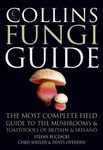By: Luiz Henrique Rosa(Editor)
345 pages, 51 colour photos and illustration, 10 b/w illustrations, 51 tables
![Fungi of Antarctica Fungi of Antarctica]()
Click to have a closer look
About this book
Contents
Customer reviews
Biography
Related titles
About this book
This book focuses on the fungi found in one of the most pristine regions on Earth: Antarctica. It discusses the fungal occurrence in all substrates of the region, including soil, seawater, lake and marine sediments, rocks, ice, and snow. It also addresses the impact of climate changes on these organisms, the genomic techniques developed to study them, and how a number of compounds, such as antibiotics and enzymes, produced by the Antarctic fungi can be used in medicine, agriculture and the chemical industry.
Contents
Preface
1. Fungi in Antarctica: Diversity, ecology, effects of climate change, and bioprospection for bioactive compounds
2. Uncultivated Fungi from Antarctica
3. Fungi present in soils of Antarctica
4. Diversity and ecology of fungal assemblages present in lakes of Antarctica
5. Rock-inhabiting fungi in Antarctica: new frontiers of the edge of life
6. Fungi in snow and glacial ice of Antarctica
7. Antarctic permafrost: an unexplored fungal microhabitat at the edge of life
8. Fungi associated with plants and lichens of Antarctica
9. Fungus-invertebrate interactions in Antarctica
10. Sub-Antarctic and Antarctic marine ecosystems: an unexplored ecosystem of fungal diversity
11. The use of psychrophilic Antarctic yeast in the biological control of post-harvest diseases of fruits stored at low temperatures
12. Bioactive compounds produced by Antarctic filamentous fungi
13. Antarctic yeasts as a source of enzymes for biotechnological applications
14. Antarctic fungi as producers of pigments
15. Genomics of Antarctic fungi: A new frontier
Index
Customer Reviews
Biography
Luiz Henrique Rosa is Professor at the Department of Microbiology at the Federal University of Minas Gerais, Brazil. He has been working on Antarctic microorganisms since 2016, and has taken part in more than ten scientific expeditions to Antarctica. He is the head of the Brazilian Antarctic Program and coordinates the project Antarctic Mycology (MycoAntar): diversity and biotechnology of extremophile fungi from Antarctica.
By: Luiz Henrique Rosa(Editor)
345 pages, 51 colour photos and illustration, 10 b/w illustrations, 51 tables




































